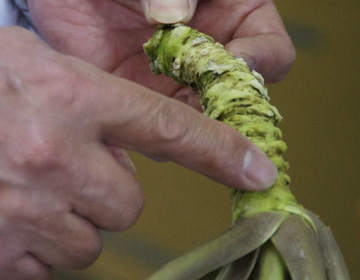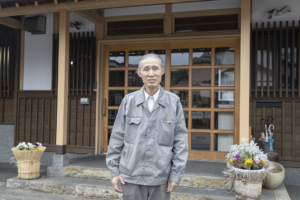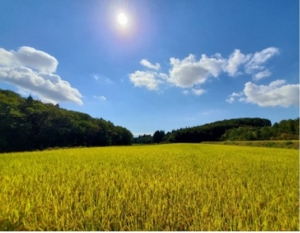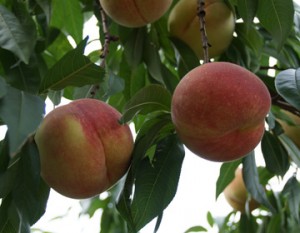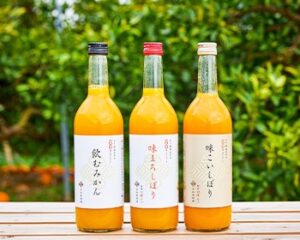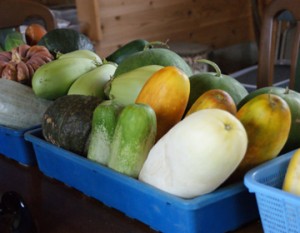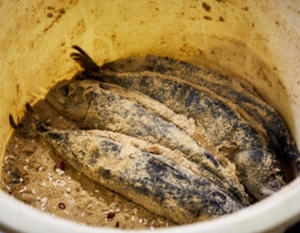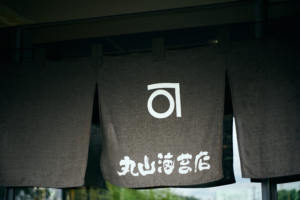History of “wasabi” from Tono
The famous ”wasabi” producing areas in Japan are Nagano Prefecture and Shizuoka Prefecture. With the 2 prefectures put together, they produce 90 percent of the ”wasabi” but Iwate also places within the top 5 in production volume, and is number one in the Tohoku region. One of the most famous locations is Miyamoricho in Tono city. We met with Shoetsu Sato, a member of the Wasabi Food Processing Cooperative who guided us to his ”wasabi” farm.
It was about 100 years ago in 1915 when ”wasabi” farming started in Tono. Tono has an abundance of fresh spring water, and the water temperature is stable throughout the year, so it is well suited for growing ”wasabi”. While we were listening to that story, we came to a spot where the beautiful clean water spread out before us. They studied ”wasabi” farming in Shizuoka and implemented a technique called ”Tatami Ishi Shiki Wasabi Farming”. Plastic greenhouses could also be seen. This area is of course really cold during the winter, so they utilize plastic greenhouses in the winter to prevent the ”wasabi” from freezing.
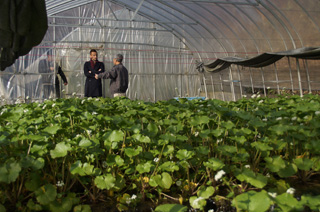
Clean spring water grows ”wasabi”
Delicious ”wasabi” will only grow in clean water. Clean water is essential for ”wasabi”. In particular, the Tassobe district of Miyamoricho within Tono city, Iwate, there are many areas with clean spring water due to the limestone in the area. Within Tono city, the are of Miyamoricho, is particularly blessed with spring water. They use this clean water to grow ”wasabi” throughout the year, but especially in the winter the taste and the flavor is concentrated and delicious.
The spring water is the key to growing ”wasabi” in Tono, however the Great East Japan Earthquake had a huge impact. The water in the ”wasabi” farm became unclear. In some areas the spring water stopped. ”I thought this was the end” Sato looked back at that time and told us. But the water finally recovered.
”After one week, the water started flowing again. We were really surprised. I don’t know why this happened, but we were really relieved.”
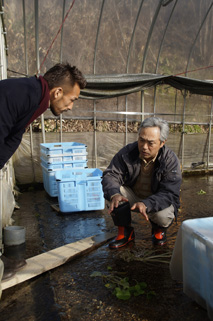
Truly fresh “wasabi” is not that spicy
When people think of ”wasabi”, many people have the image of ”spiciness” or ”a strong sting”, but truly fresh ”wasabi” is ”not just spicy”, Sato commented.
”The real quality is in the aroma. After you grate it, the aroma comes out immediately and it goes really well with rice.”
Wasabi also goes well with ”miso”. So here, they also produce a processed food called ”wasabi miso” and it is very popular. Currently, processed products outsell fresh ”wasabi”. But they want you to taste the flavor of the fresh ”wasabi” too. You will certainly encounter the true ”wasabi” flavor which is quite different from ”wasabi” in a tube.




